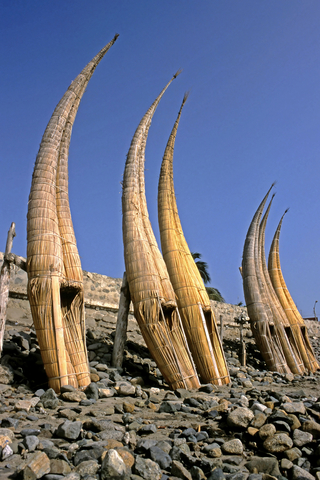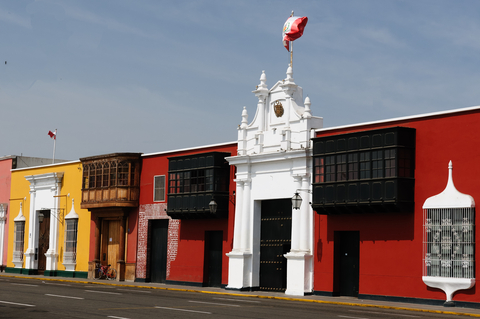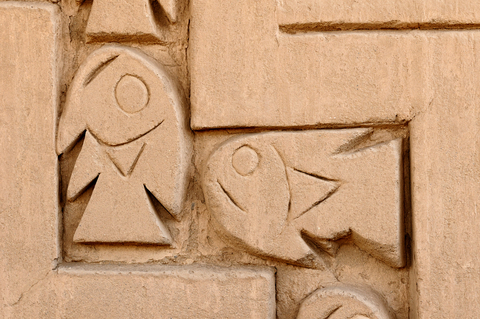Province of Freedom
 Freedom, the third most populated department in Peru after Lima and Arequipa, enjoys a mild climate, constant flow of water, magnificent natural harbors (like Chicama) and the most productive valleys of the Peruvian coast. It includes within its territory three different reliefs: coast, highlands and jungle. In La Libertad, specifically in the area of the capital, Trujillo, the Andes connects with the Pacific Ocean.
Freedom, the third most populated department in Peru after Lima and Arequipa, enjoys a mild climate, constant flow of water, magnificent natural harbors (like Chicama) and the most productive valleys of the Peruvian coast. It includes within its territory three different reliefs: coast, highlands and jungle. In La Libertad, specifically in the area of the capital, Trujillo, the Andes connects with the Pacific Ocean.
The distance between Trujillo, the departmental capital, and Lima is 557 km, which is covered in about 8 hours by the Panamerican highway, completely paved.
By plane, the trip takes 45 to 50 minutes. Trujillo is also connected by air with major cities, and there are regular daily services from its airport "Carlos Martinez de Pinillos", located 9 km from the city. The main port is Salaverry, 14 km south of Trujillo.
Coming from Lima, by land, after passing Chimbote (Ancash), there are 50 km of desert before the valleys of Chao and Viru. At the exit of the latter, in the pampas Pur Pur, gigantic dunes can be seen, perhaps the largest in the world.
CALIPUY SANCTUARY
On an area of 4500 ha, Calipuy National Sanctuary, located near the Reserve and created at the same time, protects one of the largest stands of a species of rare wild flora: the Puya Raimondi.
Discovered in the Chavin de Huantar (Ancash) by the Italian scientist Antonio Raimondi, this plant, also known by the names of Titanca, Ticatica, Cuncush, Santon, keshke-belongs to the family of bromeliads and grows only on sunny, exposed slopes and well-drained soils.
It is used as fuel and as a construction material, but unfortunately some ranchers burn their base-because of its very spiny nature-for the purpose of preventing the tangling their cattle.
The fauna includes the Cougar, the coastal and Andean fox, the vizcacha, the spectacled bear, the deer, the condor, the hawk Retriever, the red and black headed turkey.

TRUJILLO, THE CAPITAL
Historically, Trujillo has been from the beginning one of the great cities of Peru.
While its colonial opulence and splendor was developed thanks to farming, the same activity was also the cause of a prolonged stagnation. The rich farms had no need of the city, and the life in town was marked by a lack of income and quietness, despite being the place where the royalty resided.
However, in the last 50 years things have changed and a fresh impetus is transforming the sleepy city of traditional houses into a modern industrial city that combines modern lines with the historical urban walls of the past.

CITADEL BARRO
The city has ten walled citadels which housed ceremonial rooms, burial chambers, temples, reservoirs and residences. It is triangular, surrounded by 50–60 foot walls. There are no enclosures opening north. The tallest walls shelter against south-westerly winds from the coast. North-facing walls have the greatest sun exposure, serving to block wind and absorb sunlight where fog is frequent. The numerous walls throughout the city create a labyrinth of passages.
The walls are adobe brick covered with a smooth surface into which intricate designs are carved. There are two styles of carving design: one a realistic representation of subjects such as birds, fish, and small mammals, and the other a more graphic, stylized representation of the same subjects. The carvings at Chan Chan depict crabs, turtles, and nets for catching sea monsters. Chan Chan, unlike most coastal ruins in Peru, is very close to the Pacific Ocean. In 1998, The "Master Plan for Conservation and Management of the Chan Chan Archeological Complex" is drawn up by the Freedom National Culture Institute of Peru with contributions from the World Heritage Foundation - WHR, ICCROM and GCI. The plan was approved by the Peruvian Government.
To increase the farmland surrounding the city, a vast network of canals diverting water from the Moche river was created. [5]It was only with these canals that the city's population could increase. Before the canals, the city relied on wells dug up to 15 meters deep. [6]Many canals to the north were destroyed by a catastrophic flood c. 1100 AD, which was likely the key motivation for the Chimúto refocus their economy to one rooted in foreign resources rather than in subsistence farming. [6]Chan Chan has water reserves called huachaques. (ref: Wikepedia
Chan Chan, which is at the heart of the Chimu state, near the modern city of Trujillo, are the most extensive ruins of Peru. Chan Chan, "the largest adobe city in the world", covers an area of 20 km2.
The walls were built with bricks and adobe blocks, and erected on foundations of stone and earth. The central sector covers an area of 6 km2. Nine units stood inside a walled compound.
The various architectural units have been named Chan Chan names and featured mainly archaeologists: Tschudi, Uhle, Tello, etc. One set of walls in two, the Tschudi named after the Swiss scholar Johann J. Von Tschudi covers an area of 480 x 455 m, the wall that surrounds it reaches a height of up to 7 m.
It is the best preserved unit and was partially restored in the sixties by Francisco Iriarte Brenner. Presents walls are decorated with symbolic motifs coated.



